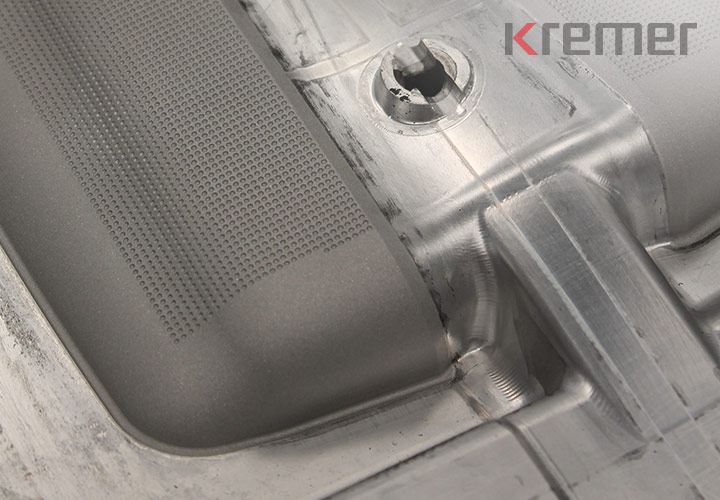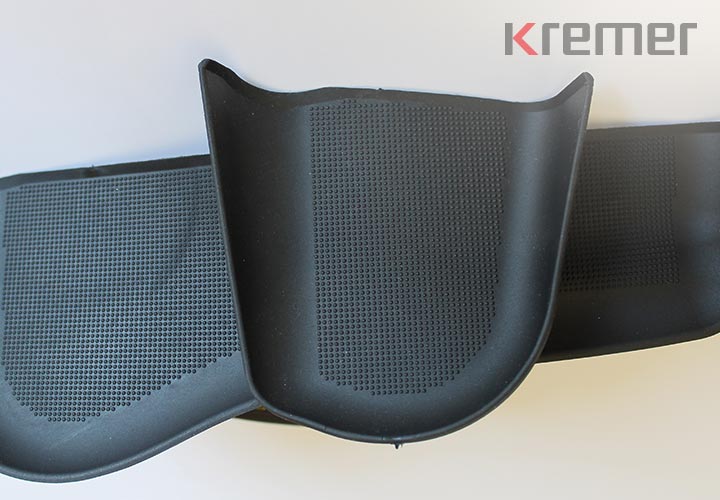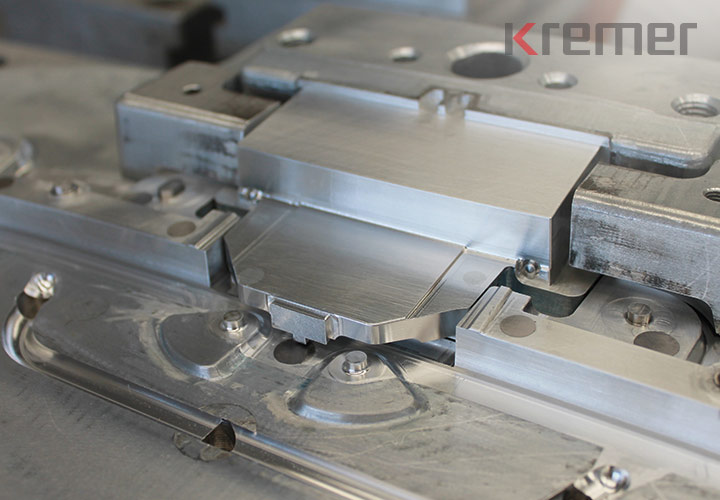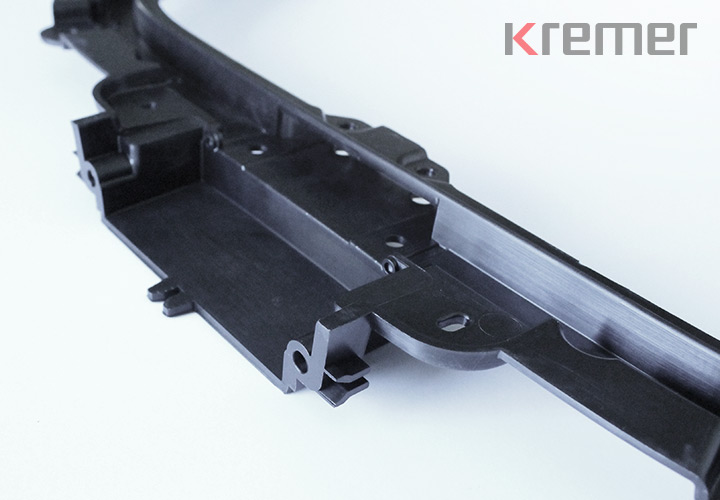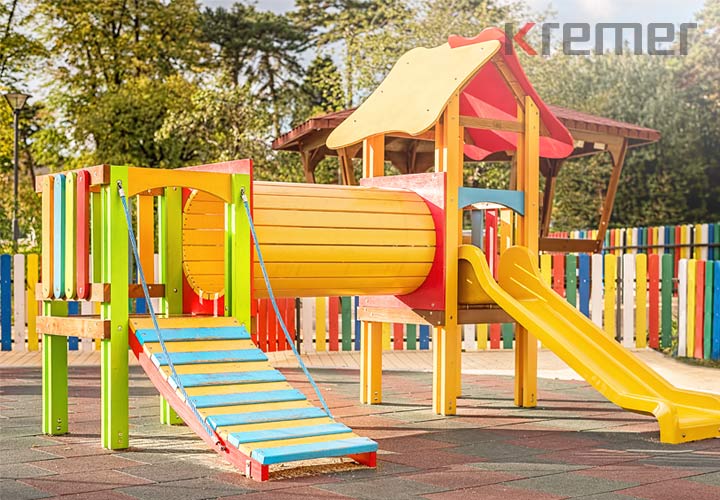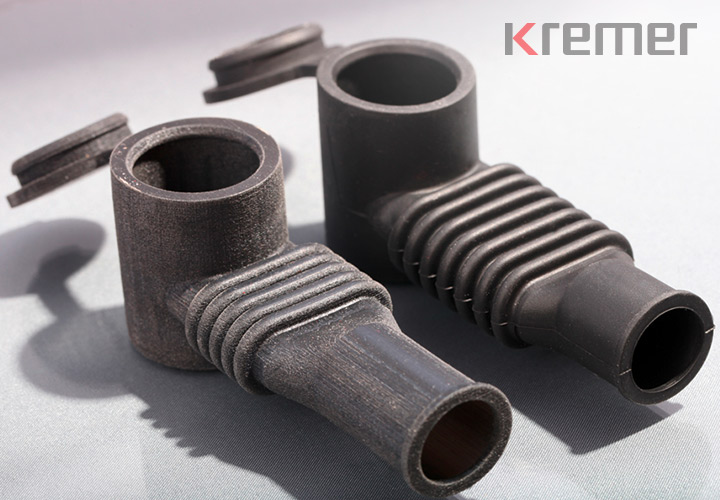Molded and injection-molded parts made of TPE
TPE - What does this term mean?
TPE - What does this term mean?
TPE = Thermoplastic elastomers are materials that can be processed in a physical process and under the influence of heat. Rubber-elastic properties remain after the cooling process. Injection-molded parts made of TPE therefore combine the advantages of processing plastic on the one hand and rubber on the other.
TPE can be welded and, with the right combination of materials, forms a permanent bond with plastics. Another advantage of TPE is that it can also form a bond with metal - in the case of 2-component parts. The TPE is often mechanically anchored through many holes in the metal part.
TPE can be used very well for 2-component parts with plastics and metals.
TPE is ideal for use in prototype production. With the help of the Fast prototyping (3D printing), functional tests can be carried out. A major advantage in the development of new products: Functions of the TPE injection-molded part can be checked before the tool is produced.
Three good reasons for KREMER
Three good reasons why we are your ideal supplier for TPE molded parts:
Consultancy - we take our time
The material TPE can be processed in so many different ways that expert advice is absolutely essential. The KREMER TPE team is familiar with the material and has already realised many products. Talk to the TPE experts at an early stage - we often find solutions for our customers that simplify processes or reveal potential savings.
Know how!
Tap into our knowledge. 2-component parts or 3-component parts - whether a hard or soft material has the greatest effect, whether geometries can be produced economically or whether two prototypes should be produced first in order to develop a perfect TPE moulded part. We are happy to pass on our experience.
Quality assurance
Once a tolerance has been defined, we adhere to it exactly. To fulfil this promise, we focus on quality right from the start. Quality in consulting, quality in the material, quality in the process, quality in production. You can rely on this with KREMER.
Numbers – Data – Facts
Information from KREMER
Number of molded parts delivered
Realized drawing parts
Number of active customers
Sales share of largest customer in %
Contact


Enquiry TPE moulded parts
Sales to commercial customers only
Note on mandatory fields and data protection
Mandatory fields are marked. All other fields are voluntary. Your data will only be collected and stored electronically strictly for the purpose of processing and answering your request. Information on data processing can be found in the privacy policy.
Do you have any questions about our products?
Whether O-rings, seals, moulded parts or materials - in the FAQ section you will find answers and lots of further information about the KREMER product range.
Further information
Injection moulding tools made of aluminium
The production of tools for injection Moulded plastic parts or TPE Depending on the geometry of the moulded part and the required processing steps in toolmaking, small and medium quantities are a not insignificant cost factor. A decision must be made on a case-by-case basis as to which mould should be used. One criterion for the pros and cons is the investment decision.
We offer the advantages of aluminium tools suitable for series production to innovative industries that only target a limited group of customers and therefore do not think in terms of large quantities. Aluminium tools are not only suitable for the production of Prototypes. They offer considerable price advantages for the series production of small and medium quantities. For example, aluminum tools are around half the price of steel tools.
Advantages of aluminum tools
- Significantly lower tool costs compared to steel molds
- High milling speeds
- Lower hourly machine rates in toolmaking
- No finished part distortion, as the aluminum injection molds can be equipped with cooling channels like steel molds
- Realization of identical surfaces as with tool steels is possible (eroding, etching, polishing, etc.)
- Significantly higher thermal conductivity compared to steell
Especially for the production of small quantities, the higher thermal conductivity of aluminum has a considerable influence on the heating and cooling speed of the tool and thus on the production time and production costs of the product series.
Alternatively, testing 3D printing is always an option. The KREMER team of experts uses its in-depth knowledge and experience to provide advice and is familiar with the advantages and disadvantages of the respective tool processes and Prototyping-Applications.
Playground equipment must meet particularly high requirements in terms of robustness and safety. Playground equipment manufacturers have to meet a large number of standard specifications in terms of material quality and freedom from harmful substances. The choice of materials is therefore decisive for the quality of the playground equipment. Many aspects such as accident risks, durability, weather resistance and other outdoor influences must be taken into account.
The platform covers supplied by KREMER had to be able to withstand outdoor weathering and must not become brittle or susceptible to breakage. When choosing the right TPE, the wind forces acting on the connecting elements also had to be taken into account. Accordingly, KREMER opted for a very flexible material. The material also has a high degree of hardness to prevent excessive deflection when the cover is stepped on. To prevent vandalism, attention was also paid to the impact resistance of the TPE. The TPE material selected is weather-resistant and can withstand heat, moisture, cold and UV radiation.
The big advantage of the Protptyping is that the functionality can be perfectly reproduced on a sample. In this case, our customer wanted the pleated tube of the protective cap to be able to be bent upwards by 90° to its original position. Our customer provided a stereolithography part to demonstrate the functionality. We also had a prototype printed. This was based on the CAD data provided by the customer. A 60 Shore A TPE material was used. In contrast to the stereolithography part, our printed prototype immediately showed that the number of folds would not be sufficient. We were able to manufacture the mold according to the printed prototype.
The neck is the narrowest part of a thermos flask. The neck profile ring, which is inserted at this narrow point, fulfills an extremely important sealing function. Only on closer inspection is a small circumferential, often brown or white area discovered: this is the thermoplastic neck profile ring that seals between the jug body and the glass flask.
The challenge here is that the mouth-blown glass bulb often has large tolerances and the neck profile ring must compensate for these tolerances with its specific molded part geometry. The contact pressure generated by the bottom screw must also be taken into account. With the neck profile ring supplied by KREMER, all requirements were met and, of course, the TPE material selected also fulfills the requirements for contact with food (BfR).

